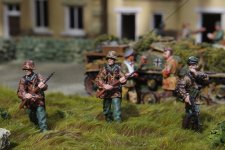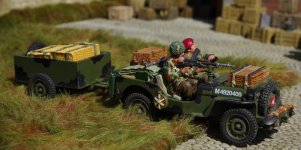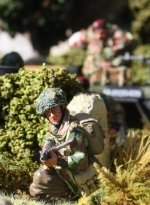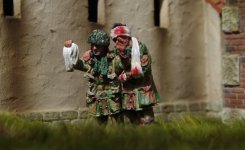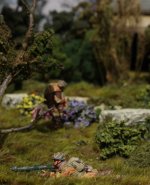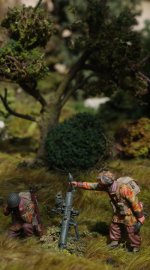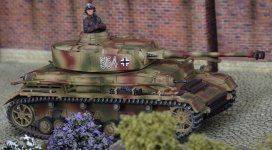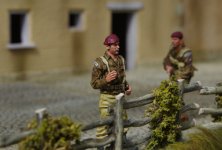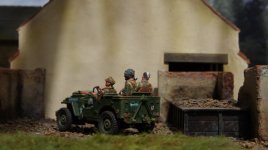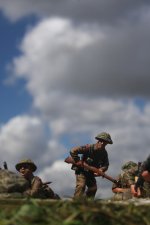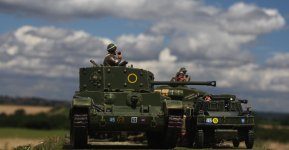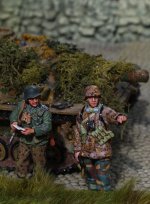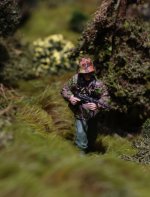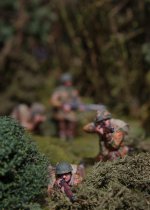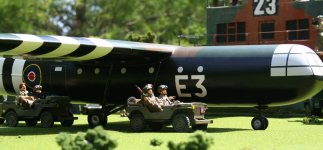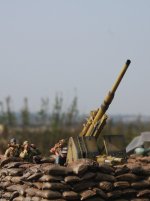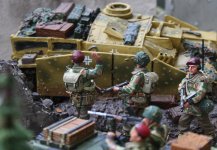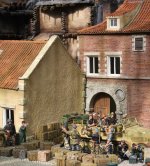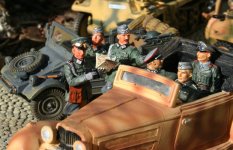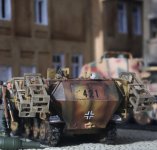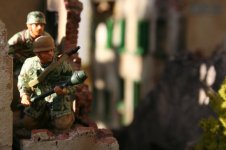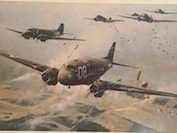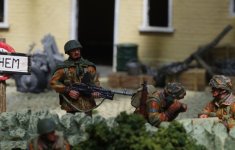Ref: Arnhem - 1944: The Airborne Battle by M. Middlebrook
The Battle at the Bridge
All this time John Frost's men had been defending their positions at the Arnhem road bridge, waiting in vain for relief, either from their own division,

or from ground forces coming up from the south.
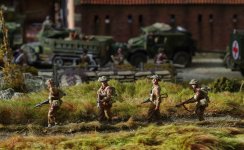
The composition of the force at the bridge did not change at all after most of the 2nd Battalion's B Company and the other men who had been trying to make a crossing at the pontoon area came into the bridge perimeter, so the men who found themselves there on that Monday afternoon would be the ones who fought that gallant action which has passed so powerfully into airborne history. The exact number of men who formed the bridge garrison will never be known; what follows is the best available estimate:
2nd Parachute Battalion
Battalion HQ; HQ Support; A Company; B Company (less most of No. 4 Platoon) - 340 men.
1st Parachute Brigade
HQ; including Defence Platoon and Signals Section - 110 men.
1st Parachute Squadron, RE
HQ; A Troop; most of B Troop – 75 men.
3rd Parachute Battalion
C Company HQ; most of No. 9 Platoon; part of No. 8 Platoon - 45 men.
1st Airlanding Anti-Tank Battery, RA
HQ B Troop; one gun team of C Troop - 40 men.
250 Light Composite Company, RASC
No. 3 Platoon - 40 men, plus Major David Clark from Divisional HQ RASC.
9th Field Company, RE
Part of No. 2 Platoon - 30 men.
In addition
There were an estimated 59 men from various other units:
17 glider pilots, all or nearly all from B Squadron arriving with antitank guns;
8 men of the Reconnaissance Squadron under Major Gough;
12 men from Royal Artillery forward observation officer
parties;
6 men of the RAOC;
5 men each from the RE ME and Intelligence Corps;
2 or 3 Military Police;
2 men from the 'Jedburgh' team; and one war correspondent.
The total force at the bridge thus numbered an estimated 740 men, equivalent to less than one and a half parachute battalions. Although many of those men were not trained to the standards of a parachute battalion, nearly all had valuable combat potential. Less than half of the force was from the 2nd Battalion. There was only one lieutenant-colonel, John Frost, but there were no less than thirteen majors among the sixty or so officers present.
There was a good cross-section of units available, but one element not present would be sadly missed: there was no part of
16 Parachute Field Ambulance there. It had been anticipated that there would be easy evacuation of seriously wounded cases to that unit's location at St Elizabeth Hospital, but that did not happen.
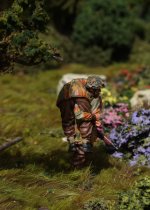
Captains J. W. Logan and D. Wright, the medical officers of the 2nd Battalion and Brigade HQ, and their orderlies would have to treat all the wounded without any assistance from surgical teams.
